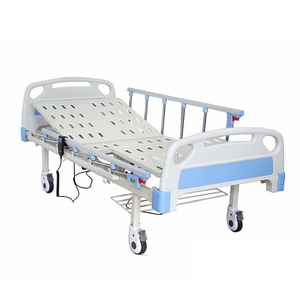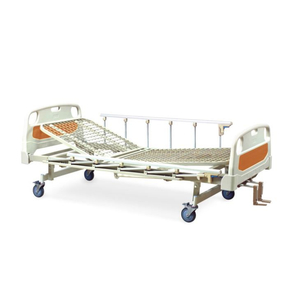The question of whether Medicare covers the cost of a hospital bed is a critical one for patients, caregivers, and medical equipment suppliers. For factories, distributors, and channel partners involved in the production and distribution of hospital beds, understanding Medicare’s coverage policies is essential. Not only does it affect the purchasing decisions of healthcare providers, but it also influences the demand for various types of hospital beds, such as manual, semi-electric, and fully electric models.
Medicare, a federal health insurance program in the United States, provides coverage for certain medical equipment under specific conditions. The coverage for a hospital bed, for instance, falls under the category of Durable Medical Equipment (DME). To qualify for Medicare coverage, the hospital bed must be deemed medically necessary, and the patient must meet specific criteria. This paper explores the intricacies of Medicare’s hospital bed coverage, the eligibility requirements, and the implications for manufacturers and distributors in the healthcare industry.
Additionally, this research will examine the types of hospital beds covered by Medicare and how suppliers can align their products to meet these requirements. We will also discuss the role of healthcare providers in prescribing hospital beds and the importance of proper documentation for Medicare claims. For those in the industry, understanding these factors can help optimize product offerings and ensure compliance with Medicare guidelines.
For more information on hospital beds and related products, you can explore the Hospital Bed section on TopMedi’s website, which offers a wide range of options that meet the needs of both patients and healthcare providers.
Medicare Coverage for Hospital Beds
What is Durable Medical Equipment (DME)?
Durable Medical Equipment (DME) refers to medical devices that are necessary for the treatment or management of a medical condition. These devices must be durable, meaning they can withstand repeated use, and they are typically used in the home. Hospital beds fall under this category, along with other equipment like wheelchairs, oxygen tanks, and walkers.
Medicare Part B covers DME when prescribed by a doctor or healthcare provider for use in the home. However, not all hospital beds are covered, and the bed must meet specific criteria to qualify. Medicare will cover the cost of a hospital bed if it is medically necessary for the patient’s condition and if the patient meets the eligibility requirements.
Eligibility Criteria for Medicare Coverage
To qualify for Medicare coverage of a hospital bed, the patient must meet certain eligibility criteria. These criteria include:
The patient must have a medical condition that requires positioning of the body in ways that are not possible with a standard bed.
The patient must need a hospital bed to alleviate pain, improve body alignment, or prevent respiratory infections.
The patient must have a prescription from a doctor or healthcare provider stating that a hospital bed is medically necessary.
Medicare will also consider the type of hospital bed needed. For example, a manual hospital bed may be covered if the patient can operate it without assistance. In contrast, a semi-electric or fully electric hospital bed may be covered if the patient requires more advanced features for medical reasons.
Types of Hospital Beds Covered by Medicare
Medicare covers different types of hospital beds, depending on the patient’s medical needs. These include:
Manual Hospital Beds: These beds are operated manually using a hand crank. They are typically covered for patients who do not require frequent adjustments and can operate the bed independently.
Semi-Electric Hospital Beds: These beds have electric controls for adjusting the head and foot sections but require manual operation for height adjustments. Medicare may cover these beds if the patient needs frequent position changes but does not require full electric functionality.
Fully Electric Hospital Beds: These beds are fully motorized, allowing for easy adjustments of the head, foot, and height positions. They are typically covered for patients with more severe medical conditions that require frequent adjustments.
It is important to note that Medicare will only cover the cost of a hospital bed if it is deemed medically necessary. The patient’s doctor must provide documentation that justifies the need for a hospital bed, and the bed must meet Medicare’s criteria for coverage.
For manufacturers and distributors, offering a range of hospital beds that meet Medicare’s coverage requirements is essential. By providing products that align with Medicare’s guidelines, suppliers can ensure that their products are accessible to a wider range of patients and healthcare providers.
Medicare Reimbursement for Hospital Beds
How Medicare Reimbursement Works
Medicare Part B covers 80% of the cost of a hospital bed, leaving the patient responsible for the remaining 20%. This means that if the hospital bed is approved for coverage, Medicare will pay 80% of the Medicare-approved amount, and the patient will be responsible for the remaining 20%, either out-of-pocket or through supplemental insurance.
For example, if the Medicare-approved amount for a hospital bed is $1,000, Medicare will pay $800, and the patient will be responsible for $200. However, if the patient has supplemental insurance, such as a Medigap policy, the supplemental insurance may cover the remaining 20%.
The Role of Suppliers in Medicare Reimbursement
Suppliers play a critical role in the Medicare reimbursement process. To receive reimbursement from Medicare, suppliers must be enrolled in the Medicare program and meet certain requirements. This includes providing documentation that the hospital bed meets Medicare’s coverage criteria and submitting claims to Medicare for reimbursement.
Suppliers must also ensure that the hospital bed is delivered and set up in the patient’s home. Medicare requires that the bed be delivered to the patient’s home and that the supplier provide instructions on how to use the bed. Additionally, suppliers must maintain records of the delivery and setup of the bed for Medicare audit purposes.
For more information on hospital beds and Medicare reimbursement, you can visit the service page on TopMedi’s website, which provides detailed information on product offerings and support services for healthcare providers and patients.
Medicare’s coverage of hospital beds is an essential consideration for patients, healthcare providers, and suppliers. Understanding the eligibility criteria, types of hospital beds covered, and the reimbursement process is crucial for ensuring that patients receive the equipment they need. For suppliers, aligning products with Medicare’s coverage guidelines can help expand market reach and improve patient outcomes.
As the demand for hospital beds continues to grow, particularly with the aging population, suppliers must stay informed about Medicare’s policies and requirements. By offering a range of hospital beds that meet Medicare’s coverage criteria, suppliers can ensure that their products are accessible to a broader range of patients and healthcare providers.
For more information on hospital beds and related products, visit the Hospital Bed section on TopMedi’s website, where you can explore a wide range of options that meet the needs of both patients and healthcare providers.





















